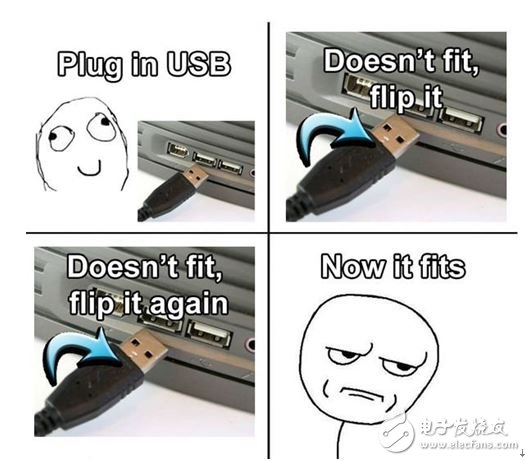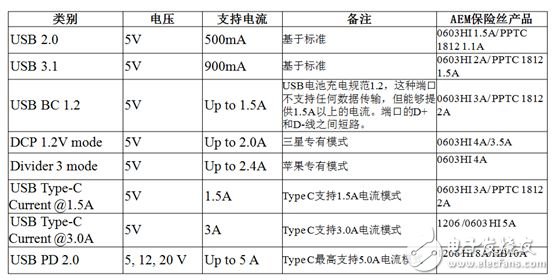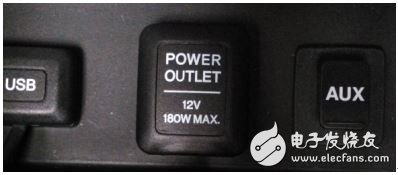In March 2015, Apple's MacBook, Google's Chromebook, July 2015 ASUS Tablet ZenPad, September 2015 Nexus 5X, 6P & Pixel C released and used Type C technology, in addition to these Nokia Z1, LeTV mobile phone and one Plus 2 mobile phones also have Type C functions. The discussion of Type C's topic is getting hotter, which makes us look at Type C again. So what is the USB type-c interface? So what is the USB type-c interface? 1. Support "positive and backward insertion" function that can be inserted from both sides of the front and back; 2. Maximum data transmission speed reaches 10Gbit/s; 3. Can withstand 10,000 times of repeated insertion and removal; 4. Slim design; 5. USB The size of the Type CC interface socket is approximately 8.3mm & TImes; 2.5mm; 6. The standard cable with USB type-c connector can pass 3A current, and also supports "USB PD" beyond the existing USB power supply. Maximum 100W of electricity. Why do you want to make a USB-C interface? We can check what the current USB interface is all about - USB is a universal serial bus interface, the word "universal" has indeed been done. Currently, the peripherals we use are the most convenient for USB devices, but with the replacement of the USB interface. In order to meet different market applications, the USB interface also derives Type-A and Type-B interfaces. These two interfaces are also standard, Mirco (many hard disk base is micro-B interface) and mini (smartphone, tablet) The most sub-category of this sub-category is that USB 2.0 and USB 3.0 mini and Mirco interfaces are not universal at all. Now it is the era of USB 3.1. If you continue this situation, it is estimated that you have to create a new interface, which is the name of the universal interface. To sum up, Type C does have a lot of advantages. This trend is well-founded. Let's take a look at the market and see how the market will accept Type C. According to different industries, my rough summary: The first fastest login should be a. mobile phone; b. notebook NB; c. charging treasure; d. charger (trip charger, car charger); e. handheld, miniaturized equipment (POS, drone, etc.) · The reason for choosing them is that there are several points: 1. There is a need to transmit information quickly; 2. There is a need for miniaturization; 3. The charging speed is required. 4. The large market volume is conducive to the development of the Tpye C economic chain. · Now that the market has begun to infiltrate, online experts predict that 2016 will be a starting point and a popular period. · If you want to create a Type C standard interface, do not pursue USB3.1 first, so the design is simple and low cost. For example, if the mobile phone is changed to USB type-c USB2.0 interface, only need to redo the cable, no chip, the cost is very high. small. If Tpye C is developing smoothly, the following markets will also be popular: a. high-end lighting DC to DC; b. projector; c. security; d. netcom; e. industry; f. medical; g. set-top box. The reason for choosing them is that 1.Type C supports a maximum of 100W output, and power is sufficient in some interfaces to support the application. 2. These industries need to be standardized and cost-effective. 3. Demand transfer rate is fast and reliability requirements are strong. · Type C design has provided a lot of solutions for various chip companies, but many of them have left their choices for protection. In this regard, I can focus on talking about protection. It is nothing more than over-current protection. Overvoltage protection, Type C has a lot of signal lines, all need to do static protection. USB Type-C can use two sets to ensure that both positive and negative can be inserted, but in fact, only one set of RX/TX is used for data transmission. The speed has reached 10Gb. If you upgrade the protocol later, the two groups will be the same as DisplayPort 20Gb. So the future trend ESD has lower capacitance requirements (<0.1pF). Summary of signal line transmission rate and AEM recommended capacitance: Overcurrent protection, the design of the Type C front end will add power switch, so some USB2.0 does not add fuse. However, due to the large current of Type C, the power of the load is large, and the impact energy caused by the abnormality is destructive. Therefore, the power switch can not completely cover the security of the interface, which requires over-current protection. Type C power supply and ground each have 4, so it can support up to 100W. PS to the car car filling port view, found that can support 180W, so car charging after the type C NB charging application is promising. As shown below. USB Type-C supports 20V/5A, which requires additional support for USB PD, so the USB Type-C interface does not necessarily have 20V/5A function. Of course, the function of type C can also be seen in the definition of pin pin. For example, there are two sets of differential signals of pin/pin TX/RX. CC1 and CC2 are two key pins. The function is to detect the connection, distinguish the front and back, and distinguish DFP ( Downstream Facing Port) and UFP (Upstream Facing Port), configure Vbus (USB Type-C and USB Power Delivery modes), configure Vconn (when there is a chip in the cable, a cc transmission signal, a cc becomes a power supply) Vconn), configure other modes (such as DisplayPort, pcie bus when connecting audio accessories). DFP (Downstream Facing Port) is also the main, UFP (Upstream Facing Port) is from. In addition to DFP, UFP, and DRP (Dual Role port), DRP can be used as DFP or UFP. When DPR is connected to UFP, DRP is converted to DFP. When DRP is connected to DFP, DRP is converted to UFP. The two DRPs are connected together, at which point either one is DFP and the other is UFP. Therefore, many small partners in the market reflect that the Nexus 6P is connected to the Nexus 5x type C through type C. It can perform 6p to 5x charging, which is based on the above principle.
Dual Function Key Switches is a Key Switchesthat combines Electric Key Switch and Mechanical Key Lock, which is Simultaneously have power control and could mechanically protect the equipment from invading.
Our company's Key Lock Electrical Switches has mounting dimensions of 12mm and 19mm. This 2 Position Key Switch is widely used in the field of security products, which not only can achieve the function of switching power supply but also could protect customer`s confidential data.
Below are the specifications:
Electrical and row piece dual function
Zinc alloy die cast housing and cylinder
Barrel chrome or nickel plated standard
Lock case, white iron cover
4 disc tumbler mechanism
Brass tubular keys or Bilateral bilateral milling copper key, nickel plated
The iron bar has a standard size of 13mm or Row Piece, can be made according to customer requirements.
Key may be withdraws in one or both position aSilver terminals and Contacts.
Dual Function Key Switches Dual-Function Switches,Dual Push Button Switch,Automatic Transfer Switch,Changeover Switch YESWITCH ELECTRONICS CO., LTD. , https://www.yeswitches.com




